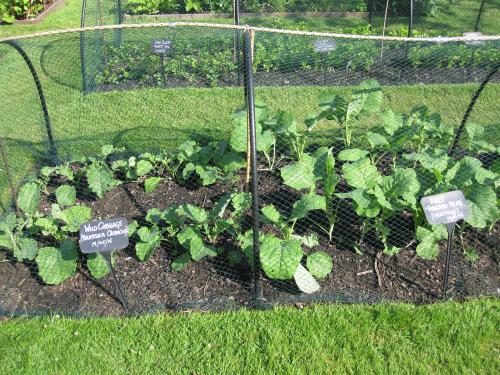SEFARI experts in plant diversity, human nutrition and soil science have been exploring variation in wild and domesticated food plants relevant to nutrition and health. In the longer term, this research could help to improve the nutritional potential of our crops but in the meantime, you can experiment for yourself by growing wild or unusual seeds.
Flavour is key, but despite the adage ‘home-grown tastes better than shop bought’, this is not always the case. Additionally, growing your own produce may not be cheaper than buying from your local supermarket, so there needs to be good reasons to embark upon using both your time and space to produce your own food. Another consideration is whether your soil is suitable (and safe) for growing edible plants.
If you decide to take the plunge you can draw satisfaction from knowing that gardening (even on the smallest scale) can bring pleasure, provide some exercise and could benefit your mental well-being. In addition to these well-known benefits, our research suggests that there are also health benefits to be had from selecting the right edible plants to grow.
Humans have developed flavour perception primarily for self-protection. This allows us to select foods that provide both energy and the necessary nutrients required for us to develop and grow, but also to help us to avoid eating harmful substances. We detect many toxins as a bitter taste and generally enjoy sweet high-energy foods, but our discerning taste palate also craves diversity and we all have individual preferences for particular flavours. Compounds within plants known as phytochemicals are responsible for providing taste. For example, molecules such as curcumin (found in turmeric), eugenol (in cloves) and thymol (in thyme) provide a distinct flavour to many of our popular dishes such as stews and salads. However, many of these phytochemicals have also been shown to have properties that could also benefit our heath. This includes the potential to reduce inflammation, which can be directly beneficial and might also help to prevent non-communicable diseases such as cardiovascular disease and type II diabetes.
Our research has shown that some edible wild plants and relatives of our more commonly consumed crops contain much higher amounts of these beneficial compounds. One example is with the Scottish ‘blaeberry’, or ‘bilberry’ as it is known elsewhere. The deciduous shrub grows well on marginal lands such as in our woodlands and hills. We have shown that the berries produced are much higher in compounds called anthocyanins in comparison with the blueberries commonly found in supermarkets. The bilberry extracts can reduce blood sugar levels, which is important for the prevention and maintenance of type II diabetes. Through our ‘Really Wild Veg’ project we have also demonstrated that higher levels of these phytochemicals were present in wild relatives of radish, beet and cabbage, compared to modern readily available varieties.
Choosing to grow some of our ancient or older varieties of crops could benefit your heath, but another consideration for many gardeners is how to garden sustainably in a manner that is sensitive to protecting our environment. Thankfully, these crops provide a win-win situation in that phytochemicals are also the main defence of the plant against predators. This means that they are likely to be resistant to pests without the use of insecticides. However, we must point out that our modern crops have been bred to be more productive and profitable, and given the correct growing environment, particularly one rich in fertiliser, they will offer higher yields. However, for those gardening in poorer soil conditions, wild plants may be better equipped to access the nutrients they require without the need for expensive and potentially damaging fertilisers.
There are some extremely interesting edible wild plants available, as well as some wild relatives of our modern crops with which everyone is familiar. They offer diversity in choice for planting that is important for nature, but also diversity in your diet, which we know is important for maintaining gut health. By choosing to ‘sow wild seeds’ you can contribute to a healthier lifestyle benefiting both you and our planet.
Obtaining unusual seeds does take a bit more work, so we have put together some tips to help you on your journey into vegetable diversity and the potentially healthier and more flavourful produce this diversity can provide.
Seeds of wild plants can be collected, sparingly, if the plant species is not protected by law or growing in a protected place, where bylaws may apply. If you decide to collect wild seed be certain of your identification. If you are unsure consult an expert!
Specialist seed suppliers are worth looking at as they often have unusual stock that is no longer widely available. Heirloom or heritage varieties are often no longer on the approved list of vegetable varieties and as such their sale is prohibited. This means that some suppliers have opted to run membership schemes, enabling the supply of seeds to their members within the law. The Heritage Seed Library maintained by Garden Organic and the Real Seed Catalogue from the Real Seed Collection Ltd are two such schemes in the UK.
If you become hooked on unusual vegetables, you can also help to preserve vegetable genetic diversity by participating in seed saving schemes operated by some suppliers.
Professor Wendy Russell, Professor Lorna Dawson and Dr Max Coleman
